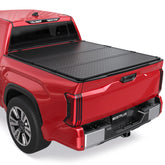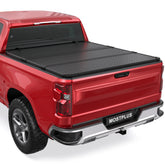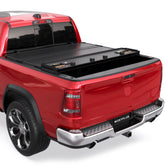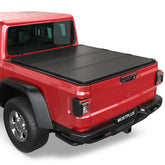How to check a car's starter motor?
The starter is a device whose main function is to start the engine. Like the battery and the alternator, your engine will not start without this accessory.
Replacing a starter is often a difficult operation due to its inaccessibility inside the engine. That's why it's important to do a preliminary test to confirm the malfunction.
What are the symptoms of a faulty starter?
When the engine fails to start, the source of the problem is likely to be found in one of three components: the starter, the battery or the alternator.
It's important to identify which of these parts is causing the problem based on the symptoms:
- The warning lights on the dashboard come on, as do the headlights, but you can't start the engine.
- You hear a clicking sound. The car won't start and instead you hear a single click when you turn the key or press the start button.
- You hear a popping sound. In this case, the battery is probably at fault, although a starter malfunction cannot be ruled out.
- You hear a grinding noise. This can mean that the starter sprocket is worn or not engaging properly. It's similar to the sound you hear when you start the engine and accidentally hit the ignition switch again.
- Smoke is coming from the car. The starter is part of the car's electrical system and can handle blown fuses and short circuits. If left on all the time, it can overheat, making electrical problems more likely.
- Oil has penetrated the starter. If you open the hood and find that your starter is soaked in engine oil, it may be a symptom of another problem: an oil leak.
What can cause a starter to fail?
When the starter stops working, the engine will not start. The first thing to check is if the vehicle's battery has been disconnected or discharged. Other possible causes include
- A faulty electrical contact, especially in hot weather, as the ambient temperature affects the ability of different metals to conduct electrical current.
- Solenoid failure due to accumulation of dust particles or spectral cutoff.
- Interruption of current transmission between the magneto and the solenoid, or wear on the magneto, one of the most stressed parts in the car.
- Starter motor failure due to clogged commutator and/or worn brushes.

How do you test your starter?
Check the battery
Before investigating further, the first thing to do is check the battery. With a multimeter connected to its terminals, read its voltage, which should be no less than 13 volts. If not, recharge or replace it.
Checking the Solenoid Power Supply
Connect a test light between the solenoid power lead and a previously tested ground (engine body or battery ground terminal).
If the light remains off, the starter is not the source of the problem. Check the supply fuse, key switch and supply lead. If the light comes on, the starter or its main power supply is faulty.
Check the starter's main power supply.
- Check the condition of the battery terminals and, if they are sulphated (with a white deposit), clean them with water and scrape their surface with a metal blade or special cleaning tool.
- Check the tightness and condition of the positive cable connection to the solenoid.
- Check the ground wire: In automobiles, the return current flows through the vehicle structure. The drive train, a source of parasitic vibration, is connected to the car's chassis by silent blocks, which isolate it electrically.
The engine is connected to the battery and the body by braids or ground cables. It's important to check that these lines are in good condition to ensure that the starter works properly. If these checks are satisfactory, consider removing the starter.
Removing the Starter and Confirming Your Diagnosis
Before replacing or removing the starter, test the starter after removal (immobilize the starter by placing its nose in a vice):
- Connect jumper cables between the battery and starter (+ to solenoid terminal and - to starter ground).
- Supply the + on the solenoid control via a jumper cable connected to the battery.
You should see the same malfunctions as with the starter installed in the vehicle.
If you have followed all of these recommendations, you should now know whether or not you need to replace your starter.
Featured Products
- $479.99
$499.99- $479.99
- Unit price
- / per
- $549.99
$549.99- $549.99
- Unit price
- / per
- $489.99
- $489.99
- Unit price
- / per
- $469.99
$489.67- $469.99
- Unit price
- / per














